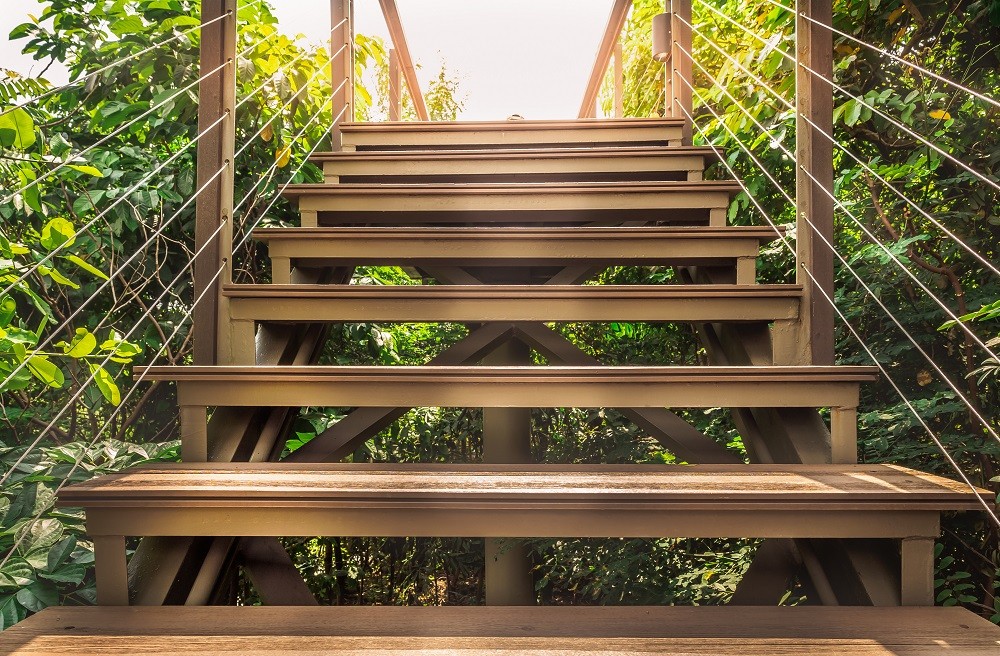How to Build Deck Stairs & Install Deck Stair Stringers

Stair stringers for your deck work silently in the background. Their purpose is to provide a strong and stable support structure for the stairs.
When cut precisely and carefully, you can feel confident your deck stairs will be level and spaced apart properly. However, before diving into the installation of stair stringers, it’s important to learn more about the parts of your deck stairs. Understanding how everything works together will help you see why proper installation is critical.
Parts and Components of Your Deck Stairs
Several components are essential for deck stair installation. These include:
The Landing Pad
This is the flat surface made of gravel, pavers, or concrete installed at the base of the steps. If the stairs will not be used regularly and the ground is flat, it may be possible to avoid installing a landing pad, but this is not recommended.
Stair Treads
The treads are the horizontal boards that you will step on as you go up or down the stairs. Some treads are made of two by 12 boards; however, they are commonly made out of two by six sized boards.
The Stringer
The stringer is usually a wider board (typically measuring two by 12) that will run at an angle from the deck framing to the landing pad. Its job is to provide support for the treads. With an open stringer, there are notches you can see. Closed stringers are solid boards that include cleats for the treads or that have an open stringer and solid board connected to the side.
Risers
The risers are the boards that are installed at the ends and will cover the vertical spaces present between the treads. Most professionals use a one-by material, decking, or fascia board for this.
Proper Installation of Stair System Stringers
If you have an older deck installed on your property, you may notice that the stringers are installed every 16 inches or two feet. In the past, this was considered adequate when it came to support.
However, modern deck installers understand that when it comes to stringers, more is better. For this reason, modern decks should have stringers installed no more than every 12” from the center. The more stringers in place mean a more stable deck. Also, installing more stringers helps reduce the likelihood of the boards warping or cupping as time passes.
The Importance of Professional Installation
When having a deck constructed, you may be tempted to handle the process on your own. Unfortunately, this can go wrong in many ways. If you don’t have prior experience with deck construction, you may experience an array of issues, including an uneven deck, improperly installed components, wood rot, and more.
Professionals will ensure that all deck components, including the stairs and stringers, are installed properly and meet all code requirements. By hiring us, you can feel confident we go above and beyond what is standard to ensure your deck is installed without any issues.
If you have an older deck and notice issues with the steps, contact us. Our team can fully inspect the existing stairs and make recommendations regarding what needs to be improved or upgraded. We can install more stringers if necessary and replace components that are damaged. With our help, you can restore the integrity and stability of your deck stairs or any other component of your deck.
Don’t take chances when it comes to your deck. With the right installation methods and components, you can feel confident your deck will remain standing and stable for years to come.
Heartland Decks:
Husband Tested &
Wife Approved!
It's Time To Build Your Dream Deck & Give
Your Home the Backyard it Deserves
HEARTLAND DECKS
Office & Showroom
Administrative: By Appt. Only
contractor marketing & lead generation by: kcwebdesigner.com | kcseopro.com

